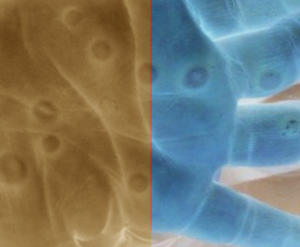People living with HIV need two shots of the mpox vaccine and likely a booster after two years
1 April 2025. Related: Journal scan, mpox.
Simon Collins, HIV i-Base
 Results from two related prospective observational studies from Germany about the efficacy of the MVA-BN vaccine against mpox in people at higher risk of mpox reported much lower efficacy in people living with HIV. [1]
Results from two related prospective observational studies from Germany about the efficacy of the MVA-BN vaccine against mpox in people at higher risk of mpox reported much lower efficacy in people living with HIV. [1]
The first study, SEMVAc (Safety and Effectiveness of MVA-BN Vaccination Against MPXV Infection) included 6265 gay and bisexual men and transgender women (n=32) between July 2022 and December 2023 who received either one (n=3850) or two (n=3636) shots of the MVA-BN vaccine.
The second, TEMVAc (Emulated Target Trial for Effectiveness of MVA-BN Vaccination Against mpox Infection in At-risk Individuals) compared rates of mpox in a similar population of 3027 vaccinated individuals compared to 3027 unvaccinated controls over the same time.
After a median follow-up of 55 days (IQR: 23 to 89) there were 16 vs 32 mpox cases in TEMVAc. Overall effectiveness by 14 days or later after one dose was 57% (95% CI: 11 to 83). However, follow-up was 53 days (IQR: 23 to 84) for the first vaccination and only 14 days (IQR: 7 to 33) after the second dose. This is important as there was no evidence of early protection less than 7 days after the vaccine.
However, when stratified by HIV status, efficacy was 84% (42 to 100) in people without HIV, and only 34% (–72 to +79%) in people living with HIV. Approximately 30% of participants in SEMVAc and 50% of participants in TEMVAc were people living with HIV with strong CD4 counts: 80% vs 84% were >500 cells/mm3 and 13% vs 13% were 200 to 499 cells/mm3, in SEMVAc vs TEMVAc respectively.
Breakthrough infections were associated with reduced symptoms, compared with infections in unvaccinated participants.
Please see the full study for details on 14 adverse reactions after the first injection and 6 after the second. Local injection site reactions were common in 70% vs 56% after the first vs second injection respectively.
The results were published on 18 March 2025 in Lancet Infectious Diseases.
comment
Although people living with HIV reported less reactogenicity compared with people living without HIV, these differences were not dramatically different.
The limited follow-up time in TEMVAc after the second vaccine dose might explain the significantly lower levels of protection in people living with HIV, where two vaccines are especially recommended. The authors noted that extending the follow-up time might not have helped however due to the significantly reduced incidence of mpox which dropped quickly.
However, 9/10 breakthrough infections were in people with CD4 counts >500 cells/mm3 and 1/10 had CD4 between 200 to 499.
Even without details on the duration of vaccine protection, people living with HIV should be strongly recommended to receive two vaccine doses.
A poster presented at CROI 2025 reported that people living with HIV should have a booster vaccine two years after their last vaccination. This was supported by Anna-Maria Geretti, chair of the BHIVA guidelines on use of vaccines and immunisations, who also stressed the need for both initial shots. [2, 3]
This prospective study from Dublin reported waning antibody responses in 122 people 600-700 days after the last vaccination compared to paired samples (n=72) collected about a year earlier – with only a third remaining seropositive.
Rates were significantly lower in people living with HIV, even after adjusting for age, time since vaccination and prior smallpox vaccination (aOR: 0.19 [95% CI: 0.04 to 0.61], p=0.01).
By contrast, 85% (11/13) of people with previous mpox infection remained seropositive at 747 (IQR: 677 to 865) days.
Antibody responses were measured using a validated assay developed by the same group to distinguish between those generated after vaccination compared to after infection. [4]
Reference
- Safety and effectiveness of MVA-BN vaccination against mpox in at-risk individuals in Germany (SEMVAc and TEMVAc): a combined prospective and retrospective cohort study. Lancet Inf Dis (18 March 2025).
https://www.thelancet.com/journals/laninf/article/PIIS1473-3099(25)00018-0/fulltext - Anna-Maria Geretti. Q&A as part of the BHIVA Best of CROI feedback webinar 2025. Wednesday 2 April 2025.
bhiva.org/event/bhiva-best-of-croi-virtual-feedback-meetings-2025 - Byrne J et al. Antibody Responses Decline Post-MVA Vaccination but Persist Following Mpox Infection. CROI 2025. Poster 439.
https://www.croiconference.org/abstract/3749-2025 - Byrne J et al. Development and validation of a quantitative Orthopoxvirus immunoassay to evaluate and differentiate serological responses to Mpox infection and vaccination. eBioMedicine, 2025. doi.org/10.1016/j.ebiom.2025.105622.
https://www.sciencedirect.com/science/article/pii/S2352396425000660
This report was updated on 7 April 2025 to include the details of the CROI study in the comments.

